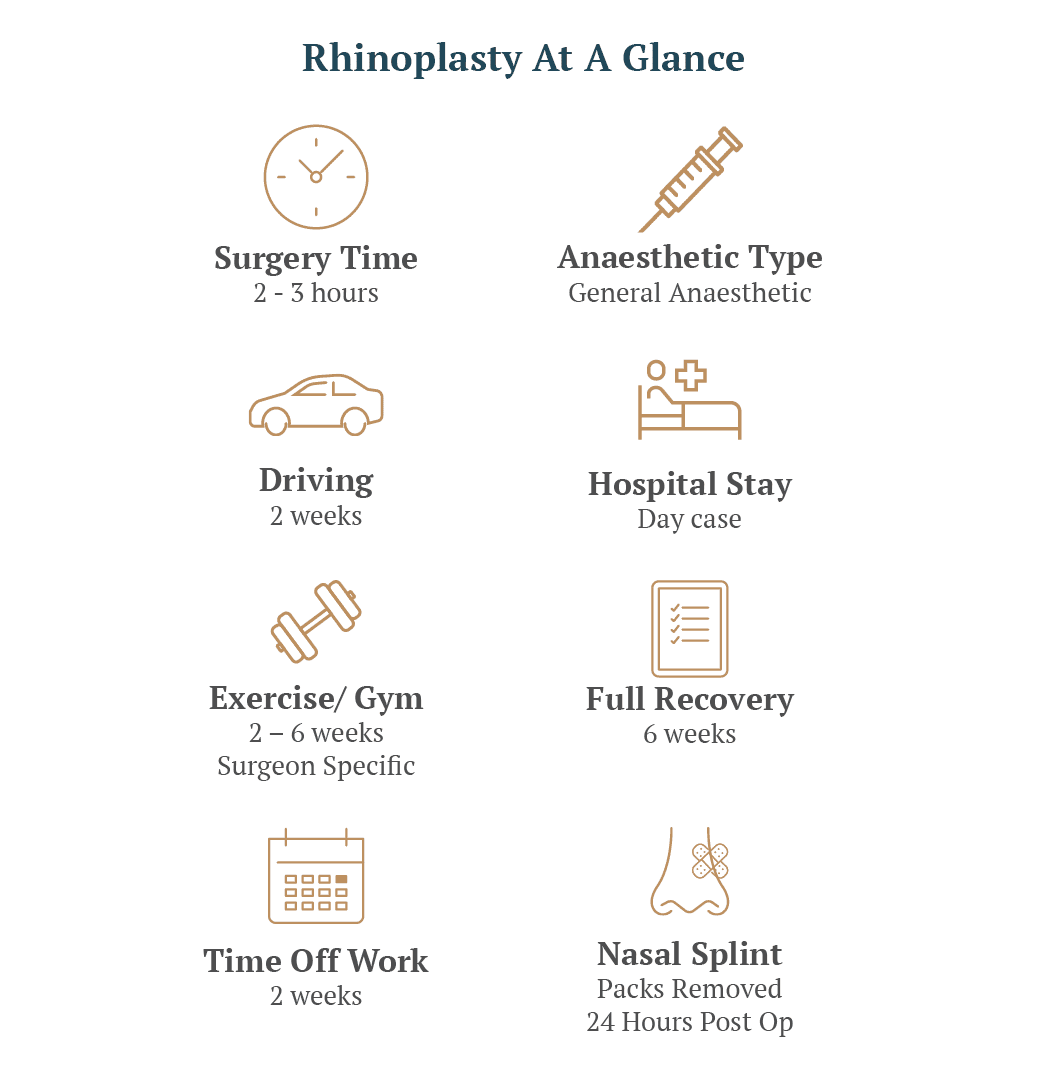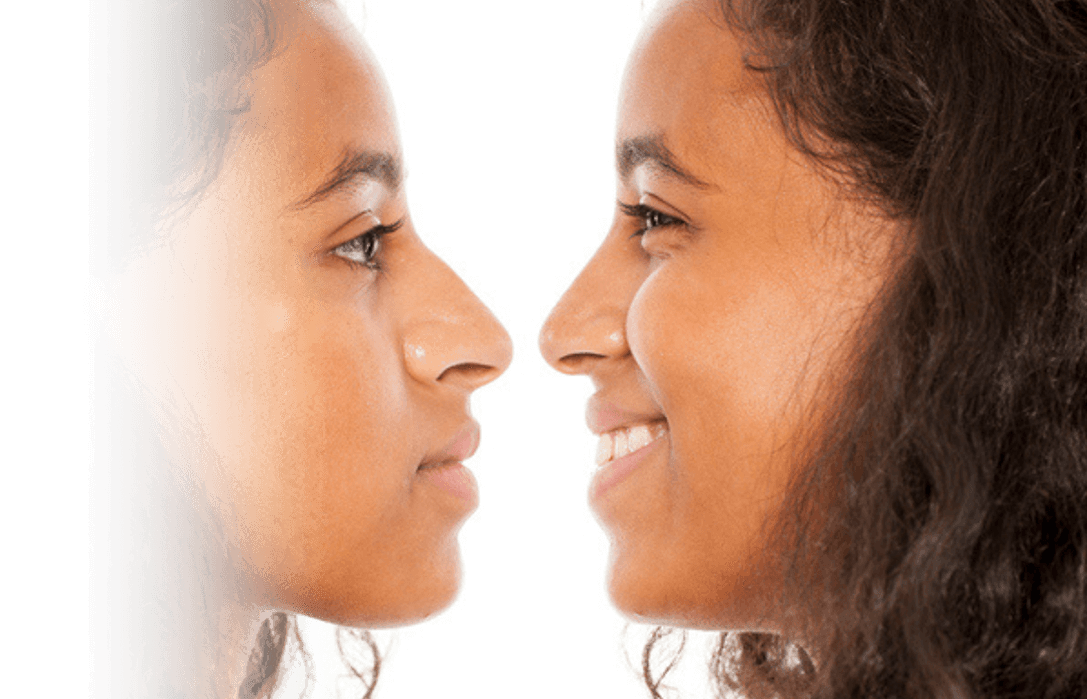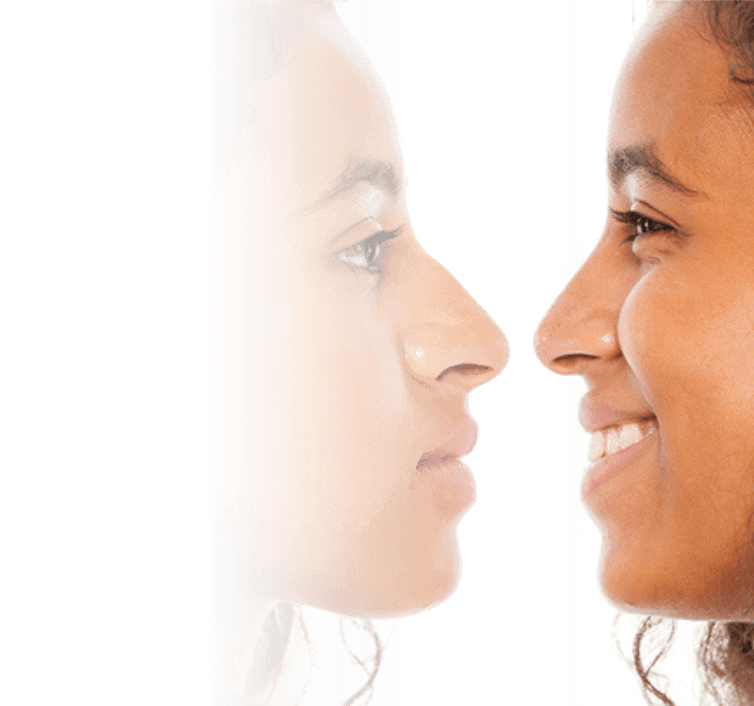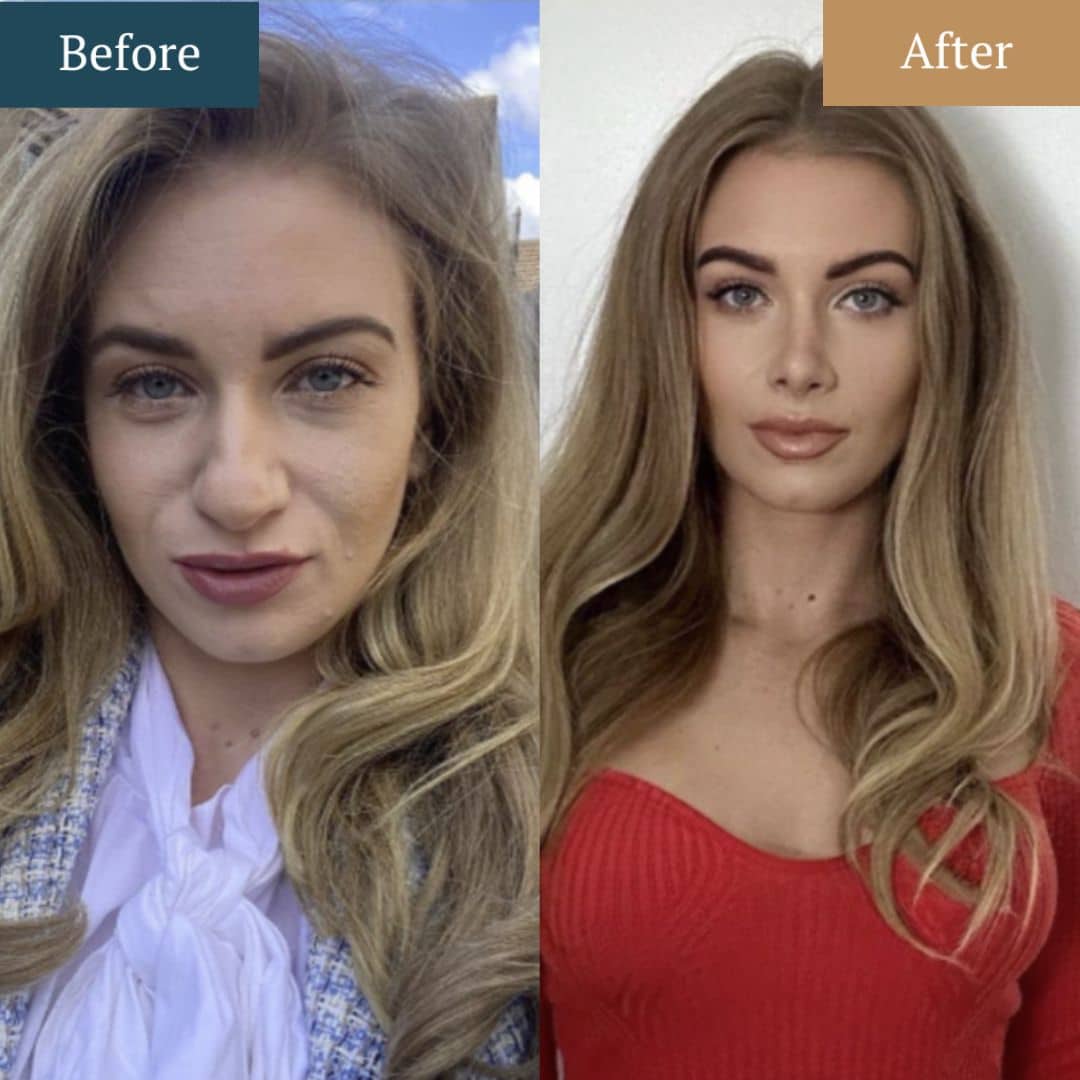Medically Reviewed April 2023, by Mr Khan- Consultant Aesthetic Plastic Surgeon for The Harley Medical Group. Next review due April 2024.
What is Rhinoplasty?
Rhinoplasty, also known as a ‘nose job’ and nose reshaping surgery, is one of the five most common cosmetic surgery procedures in the UK.
It is a surgical procedure that can change the length or width of your nose; reshape your tip, bridge, and nostrils; alter the angle between your nose and upper lip; and straighten your nose.
Whether you were born with a nose you aren’t happy with, you’ve had a nose injury, or you suffer from breathing problems, rhinoplasty aims to help you to achieve a pleasing and natural-looking nose that is in harmony with your face and improves its function if needed.
Rhinoplasty at The Harley Medical Group is most commonly carried out for aesthetic reasons. We also regularly treat various health concerns such as correcting breathing difficulties and helping alleviate the symptoms of snoring.
Rhinoplasty before and after photos
When researching cosmetic surgery procedures, we know that our patients want to understand everything, from the surgical process through to recovery time, but most importantly the results they can expect. This is why we have compiled some before and after photos to help you with your decision. This content is just a sample of our expert's work. Our medical experts in your local clinic will be able to show you more at your free no obligation consultation.
Benefits of rhinoplasty
People choose to undergo a rhinoplasty procedure for lots of different reasons. The many benefits of this procedure span from creating a nose you have always wanted, breathing easier, and improving your emotional well-being.
Benefits of rhinoplasty include:
- Reducing the size or length of your nose
- Removing or reducing a bump or hump on the bridge of the nose
- Straightening a crooked nose
- Adjusting nostril size and shape
- Amending the asymmetry of your nose
- Reshaping the tip of the nose
- Having a positive effect on your overall facial aesthetic
- Improving or alleviating breathing difficulties
- Sleeping better by alleviating sleep apnoea symptoms
- Increasing self-confidence and eliminating self-consciousness
- Overall happiness with the way you feel about your facial looks.
If you would like to address your nasal shape, size, symmetry, and/or breathing problems for any of the above reasons then you might consider nose surgery. Booking a free consultation with our expert team will allow you to discuss the most suitable rhinoplasty options for you.
Types of rhinoplasty
There are a number of different types of rhinoplasty surgeries offered by our expert surgeons. During your consultation, you will be advised on the best option for you based on your desired results and the extent that your nose can be altered. This will depend on the size of your nose, your skin condition, and your age.
The types of rhinoplasties available at The Harley Medical Group include:
- Open rhinoplasty
A cut is made across the skin between your nostrils and the skin if lifted back away from your nose. This gives your surgeon easy access, good visibility, and increased precision to sculpt your entire nose structure and achieve the results you desire. Open rhinoplasty is a lengthier procedure than closed rhinoplasty with a slightly longer recovery time and a fine scar that gradually fades.
- Closed rhinoplasty
A less invasive method than open rhinoplasty that involves making tiny cuts inside your nostrils through which access is gained to the areas to be reshaped. It is generally used for minor corrections and reshaping. Closed rhinoplasty benefits from minimal, mostly internal, scarring and takes less time to heal compared to open rhinoplasty but it does not offer the level of precision.
- Septorhinoplasty
Straightens the nose to correct a deviated septum and improve airflow whilst improving the overall appearance of your nose. Incisions are made in the internal lining of your nose to access the cartilage and bone and make any corrections to the shape of your septum (the structure that internally divides your nose into left and right halves).
- Rhinoplasty tip
Cartilage is removed to reduce the tip of your nose without visible scarring.
- Nostril alteration
Tiny incisions are made to alter your nostril size or shape with minimal scarring hidden in the nostril crease.
Rhinoplasty process
- Free initial consultation with an experienced Patient Advisor. Virtual consultations are available.
- Surgeon consultation.
- Pre-operative assessment with your Nurse.
- 24hr pre- and post-op wellness calls.
- 7 days and 6 to 8 weeks post-operative appointments.
- Comprehensive care every step of the way.
Your consultation
During your consultations you will discuss:
- Your reasons for undergoing nose reshaping surgery
- The changes you would like to make to your nose
- The results you would like to achieve
- Any recommended lifestyle changes to make before and after surgery, including smoking cessation and adjusting or temporarily stopping certain medications
- Whether rhinoplasty is the right option for you and which type is best.
- Any questions you may have
Your surgery
Your rhinoplasty process will depend on your exact surgical procedure. You can expect cuts inside your nostrils or along your columella (the skin under your nose between your nostrils).
Your surgeon may:
- make your nose smaller (nose reduction) by removing some cartilage and bone
- reshape your nose by breaking your nose bone and rearranging the cartilage
- make it larger by taking cartilage from your ear or nose for small changes or a graft from your hips or elbow if more cartilage is needed
- change the angle between your nose and top lip
- correct a bent or crooked septum (the wall between the two sides of your nose) called a deviated septum, to improve your breathing.
Your recovery
After your nose surgery procedure, a splint will be placed over the bridge of your nose for 7 to 10 days. It is removed at your follow-up appointment together with further advice and care to aid your recovery. Follow your aftercare advice.
Recovery varies from person to person, but we usually recommend taking at least ten days off work after nose surgery and avoiding sports of any kind for the first three months.
You will have bruising and swelling around your nose and eyes. To help reduce this you should:
- Avoid blowing your nose for at least two weeks after your nose surgery
- Avoid heavy lifting or bending down
- Avoid exertive exercise and sports
- Have warm baths rather than showers whilst bandages and the splint are in place
- Avoid expressive facial expressions as they may strain the nose area
- Have no sex for at least two weeks
- Avoid dusty and smoky places or any other things that may trigger sneezing and breathing difficulties
- Possible tape glasses to your head rather than rest on the nose
- Brush teeth gently and move upper lip as little as possible.
If any of the above is a concern for you then nose surgery might be something to consider. Booking a free consultation with our expert team will allow you to discuss the most suitable rhinoplasty options for you.

Rhinoplasty cost
Rhinoplasty costs vary depending on requirements. Fees at The Harley Medical Group include:
- your surgeon consultation appointment
- pre-operative assessment
- your procedure
- hospital stay and aftercare.
There are no hidden costs.
At The Harley Medical Group, we have a number of payment plans available to suit individual budgets, including a 0% finance loan paid over 12 months.













